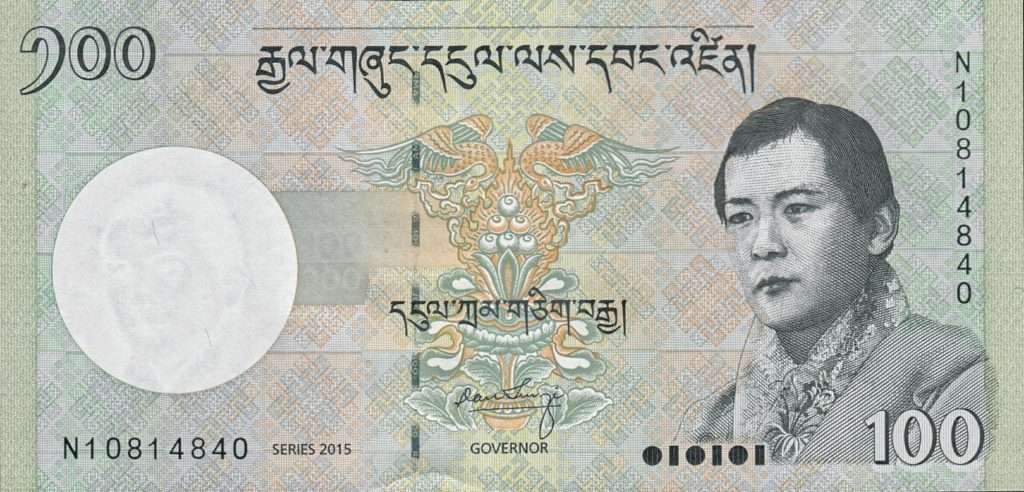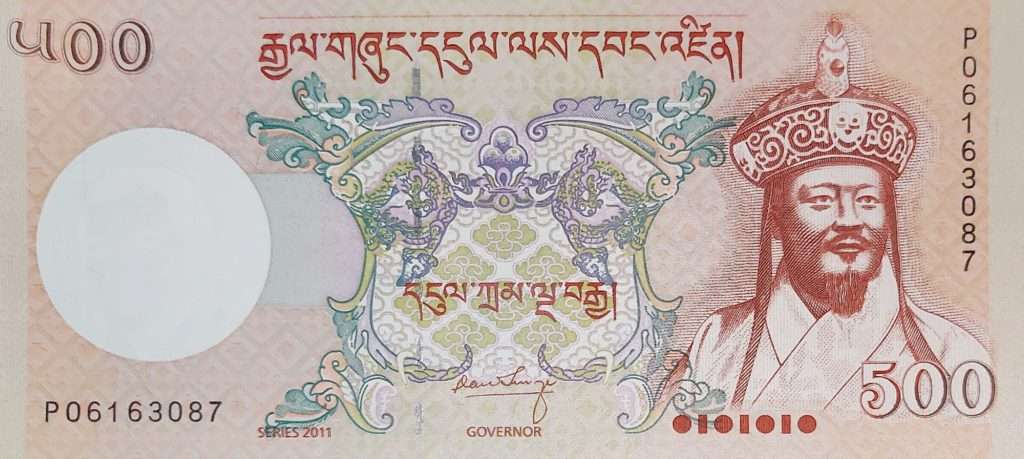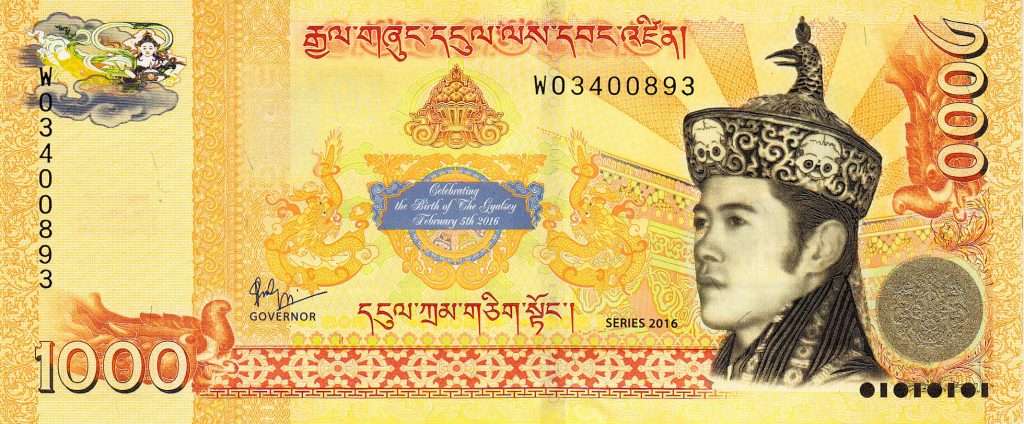Table of Contents
Bhutan, known as the last Shangri-La, is a country that treasures its traditions and heritage. One such significant element that reflects Bhutan’s unique identity is its currency—the Bhutanese Ngultrum (Nu). In this comprehensive guide, we’ll explore the history, features, exchange rates, and the significance of Bhutan’s currency in the global and regional economy. This detailed insight will not only enrich your knowledge but also prepare you for a seamless experience when traveling to this enchanting Himalayan kingdom.
Currency Converter to BTN
The Origins and Evolution of Bhutanese Currency
The currency of Bhutan, known today as the Bhutanese Ngultrum (Nu), has a history deeply intertwined with the country’s journey toward modernization. Prior to the Ngultrum, Bhutan’s economy relied heavily on barter trade, with different regions using various forms of currency, including Indian Rupees and Tibetan coins. This decentralized system was both complex and inefficient.
The introduction of the Ngultrum in 1974 marked a turning point in Bhutan’s economic development. It was introduced during the reign of the third King, Jigme Dorji Wangchuck, who is often hailed as the father of modern Bhutan. The decision to create a standardized currency was part of a broader strategy to unify the country’s monetary system and to better integrate Bhutan into the global economy.
The Ngultrum was pegged at par with the Indian Rupee (INR), a decision that underscores Bhutan’s close economic ties with India, its largest trading partner. This 1:1 peg with the Indian Rupee continues to this day, making it easier for trade and financial transactions between the two countries.
Features of the Bhutanese Ngultrum: A Currency Rich in Symbolism
The Bhutanese Ngultrum is more than just a medium of exchange; it is a symbol of Bhutan’s sovereignty, culture, and the values that guide its development. The currency is available in both coins and banknotes, with each denomination featuring distinct designs that highlight Bhutan’s rich cultural heritage and natural beauty.
Coins: The Foundation of Bhutan Currency
Bhutanese coins come in denominations of 5 Chhertum, 10 Chhertum, 25 Chhertum, and 50 Chhertum, along with 1 Ngultrum and 2 Ngultrum coins. These coins are commonly used for small transactions across the country. Each coin typically features symbols or images significant to Bhutanese culture, such as the national emblem or the Khorlo, a Buddhist symbol representing the Wheel of Dharma.
Banknotes: A Canvas of Bhutanese Identity



The Ngultrum banknotes are issued in denominations of 1 Nu, 5 Nu, 10 Nu, 20 Nu, 50 Nu, 100 Nu, 500 Nu, and 1,000 Nu. These notes are not just practical tools for transactions but also pieces of art that narrate Bhutan’s history and traditions.
- 1 Ngultrum Note: The 1 Nu note, although rare in circulation, typically features the Royal Monetary Authority of Bhutan’s emblem and the Simtokha Dzong located in Thimphu, the Capital.
- 5 Ngultrum Note: This note showcases Taktsang Monastery, the Tiger’s Nest, , which is an iconic representation of Bhutan’s spiritual heritage.
- 10 Ngultrum Note: The 10 Nu note displays the portrait of the 4th king of Bhutan, his majesty king Jigme Singye Wangchuk.
- 20 Ngultrum Note: The 20 Nu note is adorned with the third druk gyalpo, the father of Modern Bhutan.
- 50 Ngultrum Note: Featuring Trongsa Dzong, the 50 Nu note celebrates one of Bhutan’s most beautiful and significant dzongs, known for its architectural grandeur.
- 100 Ngultrum Note: This note highlights the 4th King of Bhutan and the grand Trashi Choedzong
- 500 Ngultrum Note: The 500 Nu note bears the image of King Ugyen Wangchuck, the first King of Bhutan.
- 1,000 Ngultrum Note: The highest denomination, the 1,000 Nu note, features intricate designs that reflect Bhutan’s cultural and natural heritage, along with the portrait of the reigning King.
Bhutan Currency in Relation to the Indian Rupee and the US Dollar
Bhutan’s economic landscape is closely tied to its relationship with India, and this is reflected in the pegging of the Bhutanese Ngultrum (Nu) to the Indian Rupee (INR). This peg means that 1 Ngultrum is always equal to 1 Indian Rupee, simplifying trade and travel between the two nations. Visitors from India can easily use Indian Rupees throughout Bhutan, making financial transactions seamless.
Bhutan Currency to INR
Given the 1:1 exchange rate, converting Bhutan currency to INR is straightforward. For instance, 100 Ngultrum is equivalent to 100 Indian Rupees. This parity is particularly beneficial for Indian tourists and businesspersons, who can use their home currency without needing to exchange it into Ngultrum.
Bhutan Currency in Indian Rupees
When discussing Bhutan currency in Indian Rupees, it’s important to note that while both currencies are accepted, the Ngultrum is the official currency, and it is advisable to use it for all transactions, especially in rural areas. Some merchants in smaller towns might prefer Ngultrum over Indian Rupees.
USD to Bhutan Currency
For international travelers, especially those from the United States, understanding the exchange rate between the USD and Bhutan currency is crucial. Typically, 1 USD equals around 82 Nu, but this rate can fluctuate based on global financial markets. It is advisable to check the latest exchange rates before converting large amounts of currency.
100 USD to Bhutan Currency
If you are converting 100 USD to Bhutan currency, you can expect to receive approximately 8,200 Nu, depending on the current exchange rate. Currency conversion services are available at banks, hotels, and the Paro International Airport, ensuring that you can easily access local currency upon arrival.
Bhutan Currency to USD
Upon leaving Bhutan, you might want to convert any leftover Ngultrum back to USD. While it’s possible to do this at the airport, it’s recommended to exchange smaller amounts as the exchange rates might not be as favorable. Alternatively, spending the Ngultrum on local crafts and souvenirs is a great way to use up your currency while supporting Bhutanese artisans.
Practical Tips for Managing Bhutanese Currency
Understanding the currency of Bhutan is essential for a smooth travel experience. Here are some practical tips:
- Currency Exchange: You can exchange major currencies, including USD and Euro, for Ngultrum at banks and authorized exchange counters in Bhutan. Keep in mind that the Indian Rupee is widely accepted, but using Ngultrum is preferable in remote areas.
- ATMs and Credit Cards: ATMs are available in major towns like Thimphu and Paro, and they dispense Ngultrum. However, international cards might not always work, so it’s wise to carry some cash. Credit cards are accepted in high-end hotels and stores, but cash is still king in most places.
- Spending in Ngultrum: While Indian Rupees are accepted, always carry Ngultrum, especially in rural areas where merchants might not accept foreign currency. It’s also a sign of respect to use the local currency.
- 100 Indian Rupee in Bhutan Currency: Due to the 1:1 peg, 100 Indian Rupees is equal to 100 Ngultrum. This makes financial planning easier for Indian visitors.
- 1 Dollar to Bhutan Currency: For quick conversions, remember that 1 USD typically equals about 82 Nu. This rate can vary, so check before you travel.
The Symbolism and Importance of Bhutanese Currency
The Bhutanese Ngultrum is more than just a tool for financial transactions; it represents the country’s commitment to preserving its unique cultural heritage while engaging with the global economy. Each banknote and coin carries symbols that tell stories of Bhutan’s history, its leaders, and its deeply rooted Buddhist traditions.
For instance, the 100 Nu note, featuring King Jigme Singye Wangchuck, is a reminder of Bhutan’s philosophy of Gross National Happiness, which prioritizes the well-being of its people over economic growth alone. This philosophy influences Bhutan’s economic policies, including its approach to currency and trade.
Challenges and Future Prospects of the Bhutanese Ngultrum
While the Bhutanese Ngultrum has been instrumental in the country’s economic stability, it faces challenges, particularly due to its peg to the Indian Rupee. Bhutan is heavily dependent on imports from India, leading to a trade imbalance that can strain the country’s foreign exchange reserves.
Additionally, fluctuations in the value of the Indian Rupee can impact the Ngultrum, making Bhutan vulnerable to external economic shocks. To address these challenges, Bhutan is focusing on diversifying its economy, particularly in sectors like hydropower, tourism, and agriculture. These efforts aim to reduce dependency on imports and enhance the country’s economic resilience.
Conclusion: Bhutan Currency as a Reflection of Its Values
The Bhutanese Ngultrum is more than just a currency; it is a reflection of Bhutan’s rich cultural heritage, its values, and its unique approach to development. Whether you’re exchanging USD to Bhutan currency or navigating the exchange rate between Bhutan currency and Indian Rupees, understanding the significance of the Ngultrum enhances your experience in this beautiful country.
For those planning to visit Bhutan, having a deep understanding of the local currency is crucial. It not only facilitates smoother transactions but also offers insights into the values and history of this remarkable nation.
For more information on traveling to Bhutan and making the most of your experience you may chat with us. Click on ‘Contact’ on the top of this page. Our expert guides are here to help you explore Bhutan’s natural beauty, rich culture, and, of course, its fascinating currency.


